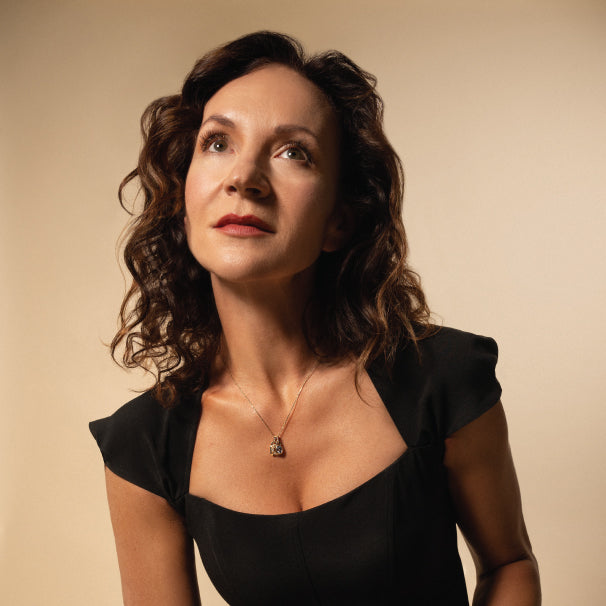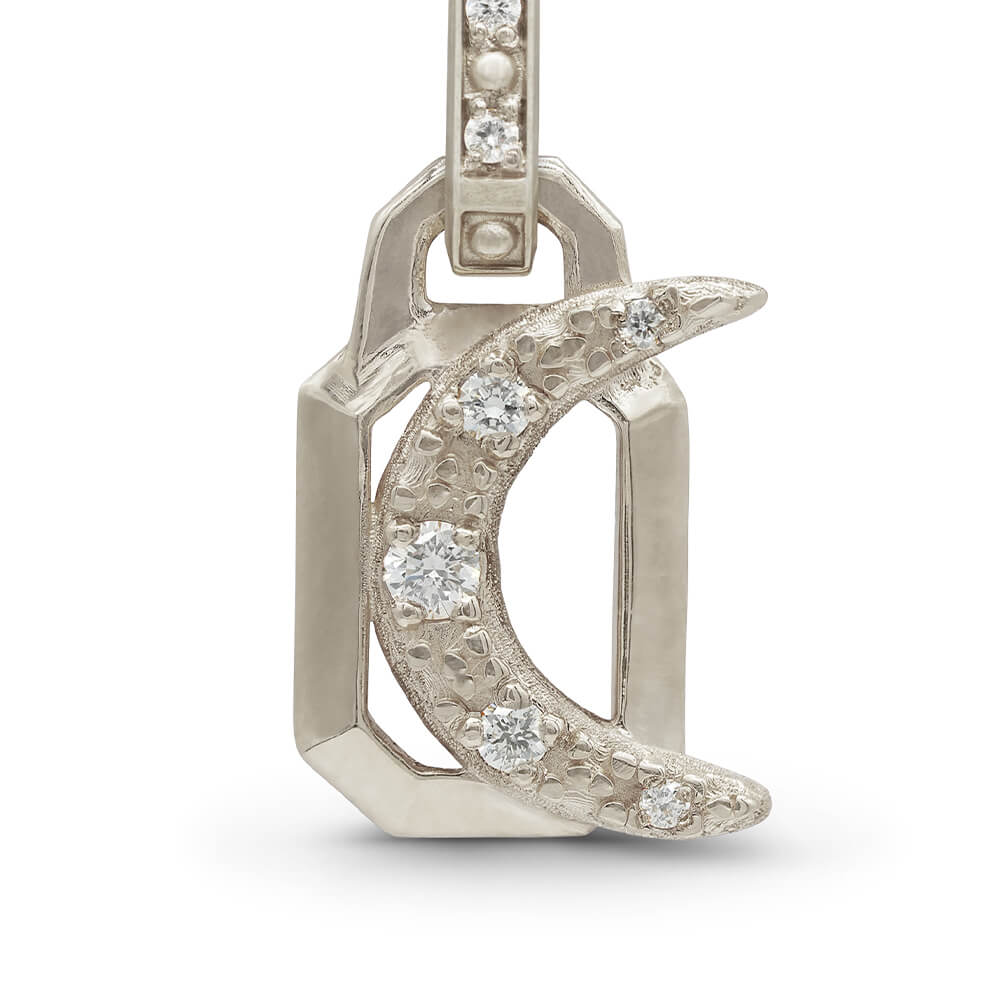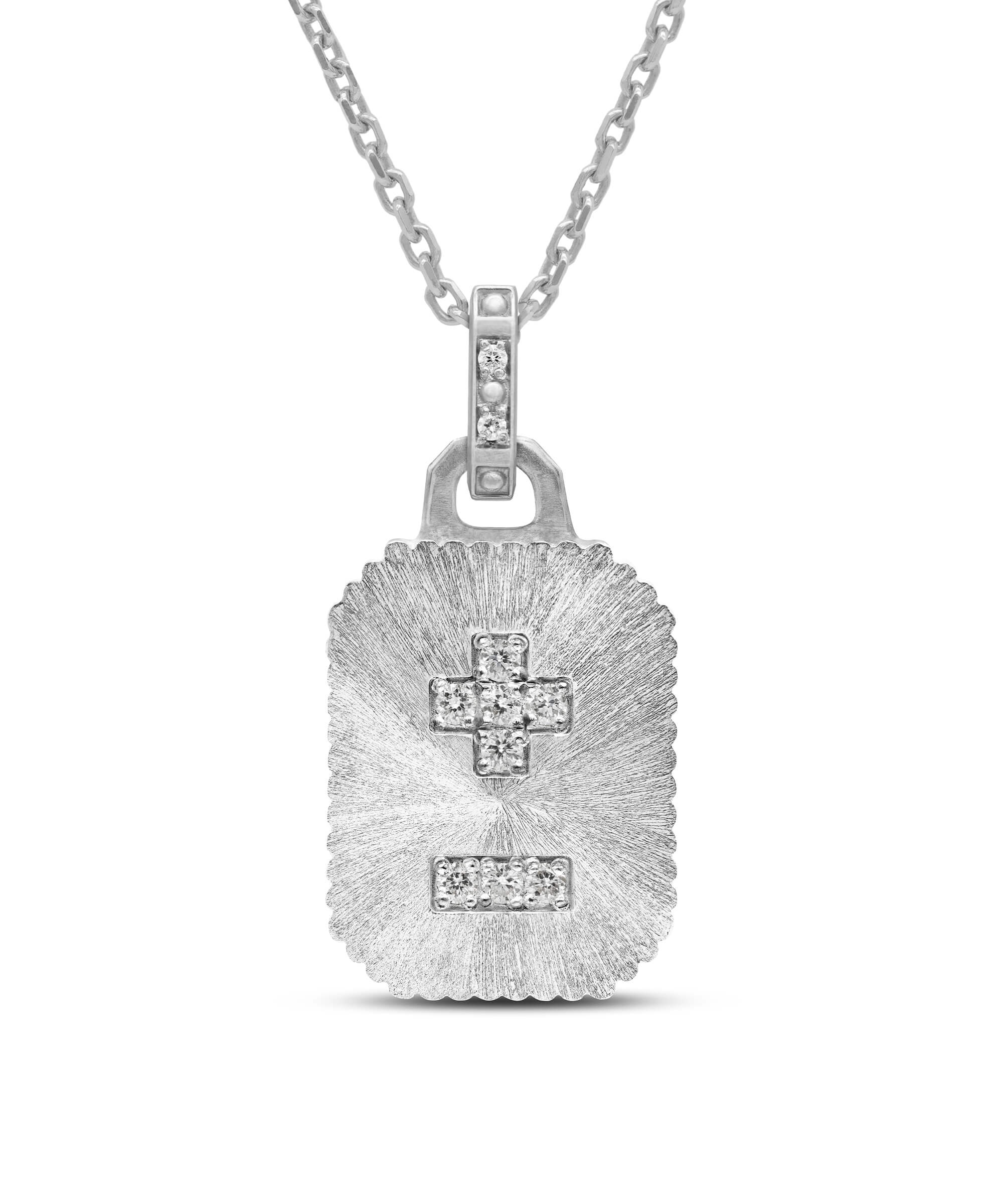The crescent symbol has a rich history and diverse cultural significance, leaving an indelible mark on human civilization. From its ancient roots in Mesopotamia and Egypt to its prominence in Islamic culture and modern branding, the crescent has symbolized transformation, intuition, femininity, and natural cycles. This exploration uncovers its influence in literature, jewelry design, and various cultural contexts, highlighting the timeless allure and enduring power of the crescent moon.
Amuletha™ Book of Symbols
Crescent Symbol
Two Men Contemplating the Moon by Caspar David Friedrich
Caspar David Friedrich's "Two Men Contemplating the Moon" embodies Romanticism's focus on nature, introspection, and the sublime. The painting highlights the emotional connection between humans and nature, reflecting themes of solitude, time, and spiritual quest. It invites viewers to ponder their place in the universe, showcasing Friedrich's skill in conveying profound philosophical ideas.
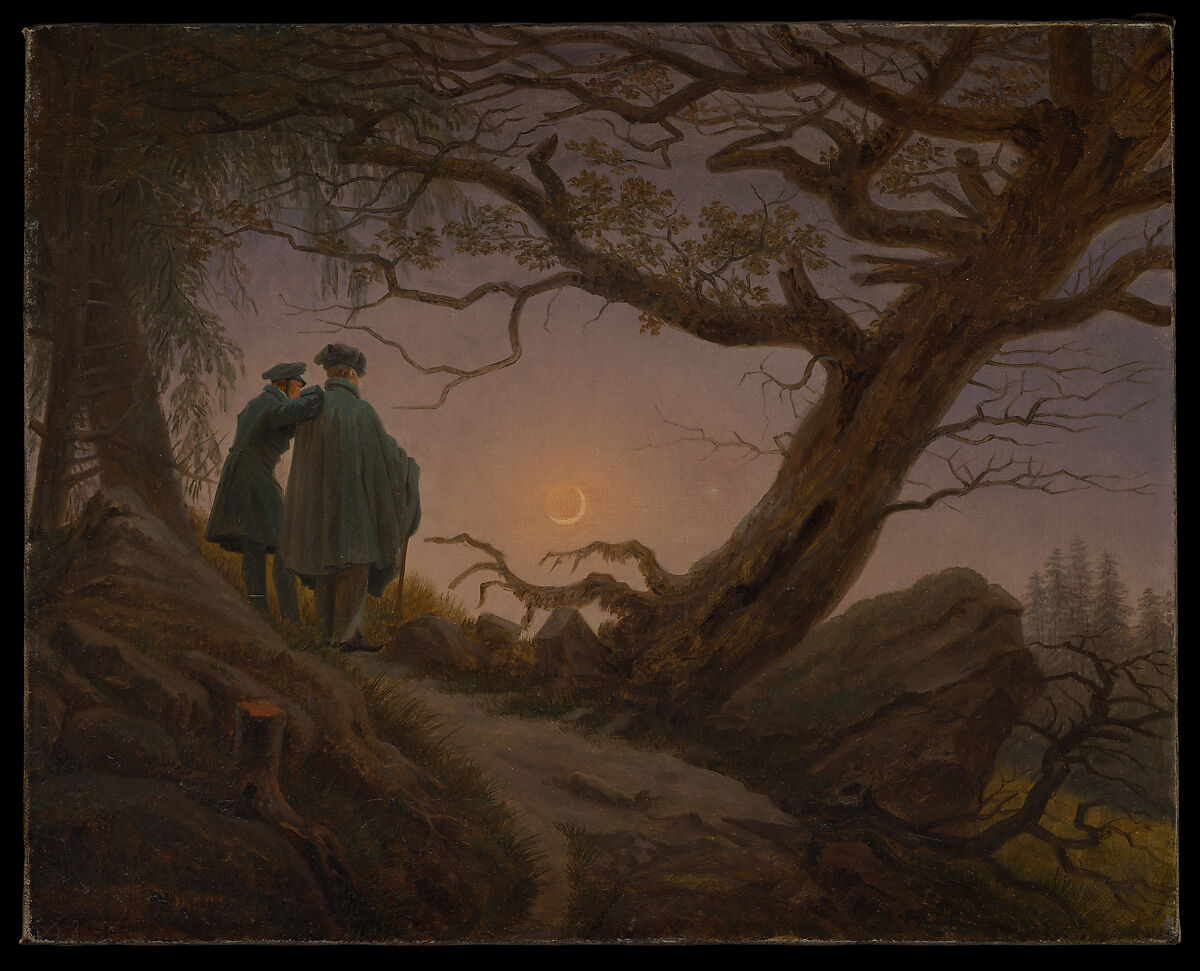
Two Men Contemplating the Moon by Caspar David Friedrich
Caspar David Friedrich's "Two Men Contemplating the Moon" embodies Romanticism's focus on nature, introspection, and the sublime. The painting highlights the emotional connection between humans and nature, reflecting themes of solitude, time, and spiritual quest. It invites viewers to ponder their place in the universe, showcasing Friedrich's skill in conveying profound philosophical ideas.
CRESCENT SYMBOL ORIGIN
The crescent symbol has a rich and varied history, deeply embedded in human culture and spirituality. One of the earliest known uses of the crescent can be traced back to ancient Mesopotamia, where it represented the moon god, Sin (also known as Nanna). The crescent moon was a powerful emblem of this deity, symbolizing the lunar cycle and its influence on time and agriculture.
In ancient Egypt, the crescent was associated with the goddess Isis, who was often depicted with a crescent moon on her head. This symbol represented her connection to the night sky and her role as a protector and nurturer. The crescent moon was also a key element in the lunar calendar, which was essential for determining religious festivals and agricultural activities.
The crescent symbol’s significance continued to evolve through history, prominently featuring in Islamic culture. It became a symbol of Islam, often seen atop mosques and on national flags, representing faith, guidance, and the lunar calendar used to determine Islamic holy days. The crescent’s graphic history reflects its universal appeal across different cultures and epochs, symbolizing various aspects of life, from divinity and protection to the passage of time and the natural order. Its enduring presence underscores its deep symbolic significance, transcending cultural and temporal boundaries.
What does CRSESCENT symbolize
While the crescent symbol carries numerous nuanced meanings, these four are the most universally recognized and embraced
Divine Power
The Crescent signifies sacred strength and higher spiritual influence.
Guidance
It serves as a beacon, illuminating the path through uncertainty to clarity.
Protection
Widely regarded as a safeguard, it is thought to repel malevolent forces.
Change
The Crescent symbolizes ongoing transformation and the inevitable cycle of renewal.
Cultural mention
The crescent symbol has left a lasting impression on various cultures throughout history, embodying profound significance and versatility. From ancient mythology and religious symbolism to modern branding and storytelling, the crescent has played a pivotal role in shaping cultural narratives and beliefs. Its presence can be seen in diverse contexts, reflecting themes of divine power and guidance.
Selene the goddess of the Moon
In Greek mythology, the crescent moon is intimately associated with Selene, the goddess of the moon. Selene was often depicted riding a chariot across the night sky, her head adorned with a crescent moon, symbolizing her dominion over the lunar cycle. The crescent represented her ever-changing form, from the new moon to the full moon, embodying the passage of time and the natural rhythm of the cosmos. Selene's connection to the crescent moon highlighted themes of femininity, intuition, and the cyclical nature of life. This symbolism extended to ancient rituals and practices, where the phases of the moon guided agricultural activities and religious ceremonies, reflecting Selene’s influence on both the heavens and the earth. The crescent moon thus became a powerful emblem of her divine presence and the mystical qualities attributed to the lunar goddess.
*Selene-Luna the moon, Greco-Roman marble statue, Pio-Clementino Museum, Vatican Museums

*Selene-Luna the moon, Greco-Roman marble statue, Pio-Clementino Museum, Vatican Museums
The Crescent Moon and Sita’s rescue
In Hindu mythology, the crescent moon is symbolically linked to the epic tale of Sita's rescue in the Ramayana, where it represents divine guidance and celestial power. Hanuman, the devoted monkey god who plays a pivotal role in rescuing Sita from the demon king Ravana, is often depicted with a crescent moon on his forehead. This crescent signifies his divine connection and the strength bestowed upon him by the gods. As Hanuman leaps across the ocean to reach Lanka, the crescent moon illuminates his path, guiding him through the darkness and symbolizing hope, perseverance, and the triumph of good over evil. The crescent moon in this context underscores the themes of divine intervention and the unwavering power of faith and devotion in overcoming great challenges.
*Hanuman illustration by K. Venkatappa from “Myths of the Hindus & Buddhists”, 1914

*Hanuman illustration by K. Venkatappa from “Myths of the Hindus & Buddhists”, 1914
A modern icon of the Crescent moon
The crescent moon has become an iconic symbol in contemporary culture through its association with DreamWorks, the American film production company. The DreamWorks logo features a boy sitting on a crescent moon, fishing among the stars, evoking a sense of wonder, imagination, and the magic of storytelling. This image captures the essence of the company’s mission to create fantastical and engaging stories that transport audiences to other worlds. The logo was conceived by DreamWorks co-founder Steven Spielberg and brought to life by illustrator Robert Hunt. The crescent moon, in this context, symbolizes the limitless possibilities of dreams and creativity, highlighting the enchanting power of cinema to inspire and captivate. The DreamWorks crescent serves as a modern emblem of fantasy and innovation, continuing the tradition of the crescent moon as a symbol of guidance and inspiration.
The famous DreamWorks logo

The famous DreamWorks logo
Crescent symbol in the world of jewelry
The crescent symbol holds a significant place in the world of jewelry, admired for its elegant and timeless appeal. Often associated with intuition and the lunar cycle, crescent-shaped jewelry pieces are cherished for their beauty and profound symbolism. Many people wear crescent-shaped jewelry as a talisman for personal growth, protection, and guidance, appreciating its connection to the moon and its representation of change and growth. The waxing and waning phases of the moon reflect the cycles of life, making the crescent a symbol of transformation and new beginnings.In addition to its symbolic meanings, the crescent shape adds a touch of elegance and mystique to any piece of jewelry. Its curved, flowing lines complement various designs, from minimalist to ornate. The crescent is often adorned with gemstones, adding sparkle and enhancing its visual appeal. As a gift, crescent jewelry carries deep significance, symbolizing hope, change, and the promise of new opportunities. Whether marking milestones, celebrating achievements, or expressing care and affection, crescent-shaped pieces are not just adornments but also meaningful keepsakes that convey a sense of connection to the natural rhythms of life.
CRESCENT SYMBOL IN LITERATURE
The crescent symbol is a recurring motif in literature, often used to evoke themes of mystery, transformation, and the cyclical nature of life. Its usage is prominent in both poetry and fiction, where it symbolizes change and the passage of time. The crescent moon frequently appears in romantic and gothic literature, reflecting the emotional and psychological journeys of characters.
Oscar Wilde's play "Salomé"
One of the most notable uses of the crescent symbol is found in Oscar Wilde's play "Salomé." The crescent moon serves as a recurring motif throughout the play, symbolizing both beauty and impending doom. Wilde uses the moon's phases to reflect the emotional states and fates of the characters, particularly Salome. The crescent moon mirrors Salome’s seductive allure and the tragic consequences of her desires, underscoring themes of desire and destruction in this haunting narrative.
Aubrey Beardsley illustrations for Oscar Wilde’s “Salome”
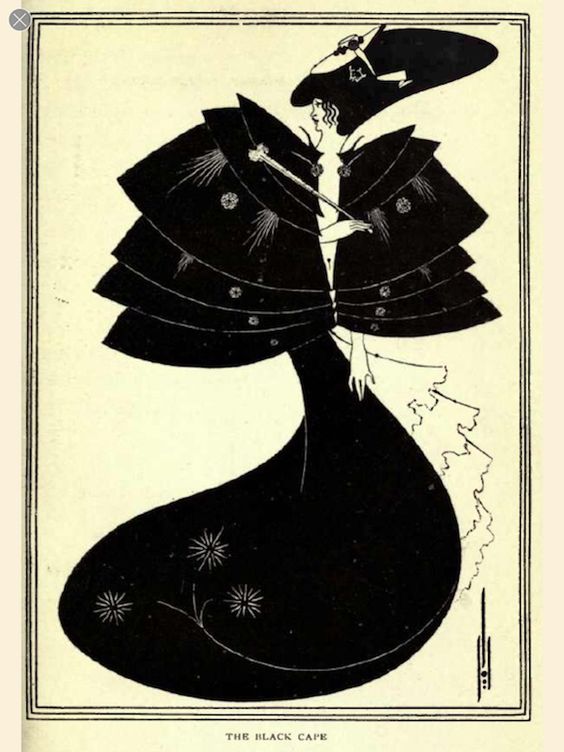
"The Moon" by Percy Bysshe Shelley
Art thou pale for weariness
Of climbing heaven and gazing on the earth,
Wandering companionless
Among the stars that have a different birth...
Shelley's poem uses the crescent moon to symbolize solitude and weariness, reflecting the poet’s contemplation of human existence and the relentless passage of time.
"The Moon and the Yew Tree" by Sylvia Plath
The moon is no door. It is a face in its own right,
White as a knuckle and terribly upset.
It drags the sea after it like a dark crime; it is quiet
With the O-gape of complete despair. I live here.
Plath’s imagery of the crescent moon evokes a sense of desolation and emotional intensity, capturing the moon’s influence over the natural world and the human psyche.
"Silver" by Walter de la Mare
Slowly, silently, now the moon
Walks the night in her silver shoon;
This way, and that, she peers, and sees
Silver fruit upon silver trees...
De la Mare’s poem personifies the crescent moon as a serene, silent observer, casting a silver light that transforms the landscape, symbolizing tranquility and enchantment.
Thoughts
Thoughts placed alongside a symbol resonate with its meaning, serving as a guide to expand your understanding of the symbol's significance in relation to your personal experiences. AMULETHA™ also embraces this approach, invites a deeper contemplation of how symbolic meanings can reflect and enrich your life’s narrative, enhancing your appreciation of both the symbol and its broader implications.
Whispered Moonlit Secrets - Gently flowing, the crescent moon whispers ancient tales of eternal transformation, guiding us through the ever-changing dance of life.
Celestial Wisdom - Softly illuminating, it unveils the hidden paths within our souls, nurturing deep insights and the wisdom of the unseen.
Divine Feminine Essence - Tenderly embracing, it channels the fertile energy of goddesses, inspiring growth, creativity, and the nurturing pulse of the universe.
Timeless Cycles - Silently reminding, it reflects the timeless ebb and flow of existence, connecting us to the rhythms of renewal and the continuum of life.
FREQUENTLY ASKED QUESTIONS
Is the crescent moon a religious symbol?
Yes, the crescent moon is a religious symbol. It is prominently associated with Islam, where it is often seen alongside a star. The crescent has also been used in various other cultures and religions to symbolize different aspects such as the moon's phases, femininity, and transformation.
Does a crescent moon symbolize good luck?
In many cultures, the crescent moon is considered a symbol of good luck and positive change. It is often associated with new beginnings, growth, and the promise of favorable outcomes.
Why do I observe a crescent moon?
You observe a crescent moon because of the moon's position relative to the Earth and the Sun. When the moon is between the new moon and first quarter, or between the last quarter and new moon, only a small portion of it is illuminated by the Sun, creating the crescent shape visible from Earth.
What does the moon represent in love?
The moon represents romance, mystery, and the emotional depths of love. Its phases signify the evolving nature of relationships, from new beginnings to maturity, and its gentle light symbolizes the nurturing and intuitive aspects of a loving connection.






